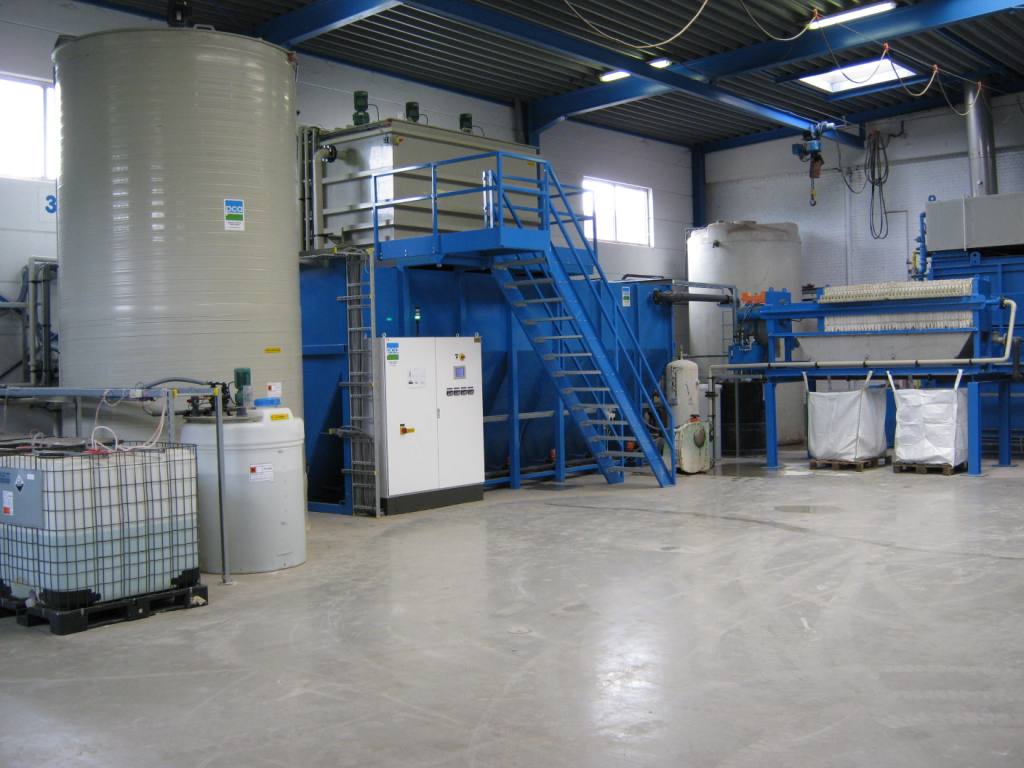Coagulation / Neutralisation / Flocculation
In a physico-chemical water treatment, the objective is often to precipitate the contaminating components to form a sludge which can be easily separated.
In order to precipitate these components, they must first be separated from the solution. This is achieved with the help of a coagulant and a neutralisation process.
Coagulant dosing is often the first step in a conventional physico-chemical process. Afterwards a neutralisation is usually performed using a dosage of milk of lime or NaOH. The dosage causes the formation of hydroxides and a sludge fraction is created. This sludge fraction will contain the polluting components.
In the final stage (flocculation) the formed sludge is "matted" into large flakes, instead of small individual sludge particles. These large flakes can be more easily separated from the waste water.
The separation of the sludge is best carried out in a decantation tank or flotation unit. The choice between these two depends on the type of pollution, concentration, flow rate etc.
A coagulation/neutralisation and flocculation treatment is a very robust treatment and suitable for many different types of wastewater. The disadvantage of this technology is that residual concentrations of pollutants remain in the wastewater. However, these residual concentrations will normally fall under the discharge standards.
PCA can help you with these technologies, both in design and construction of the installation.

